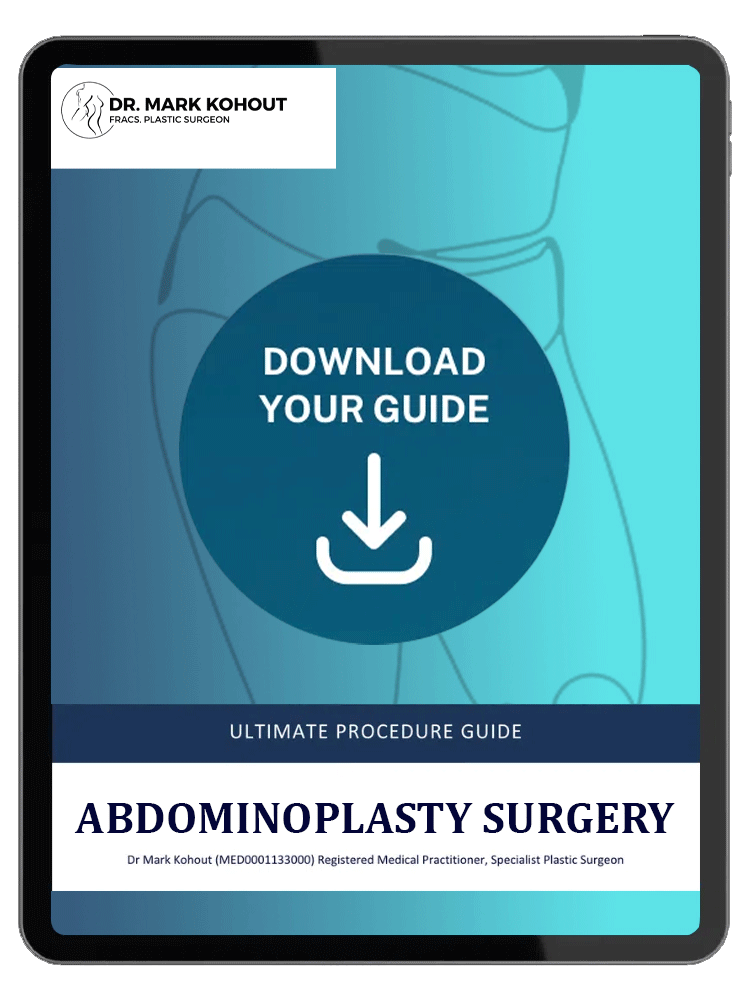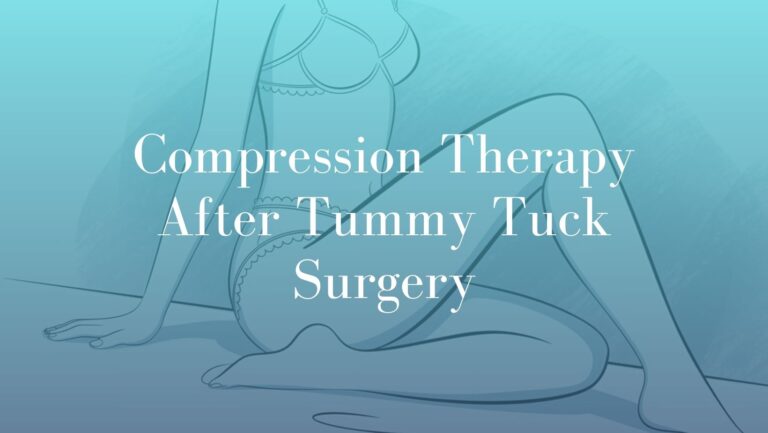
Understanding Diastasis Recti
Dr. Mark Kohout, a leading Sydney plastic surgeon with decades of experience in reconstructive and cosmetic procedures, offers a compassionate and informed approach to treating diastasis recti. Dr Kohout uses evidence-informed surgical approaches and individualised care plans to support functional outcomes and long-term stability where appropriate. This article will explore the many aspects about diastasis recti, including its causes, symptoms, treatment options, and the role of surgery and physiotherapy in recovery.
What is Diastasis Recti?
Diastasis recti refers to the separation of the abdominal muscles, particularly the rectus abdominis, which is the set of muscles that run vertically along the front of the abdomen. This condition occurs when the connective tissue that holds these muscles together weakens, often as a result of pregnancy, weight gain, or significant abdominal strain. When the muscles are no longer able to maintain their usual alignment, a gap forms between them, leading to a visible extension or protrusion of the abdomen.
While this is most commonly associated with women who have gone through pregnancy, it can also affect men and individuals who have experienced rapid weight changes or engaged in heavy lifting. The condition can cause a range of symptoms, including back pain, poor posture, and a general feeling of weakness in the abdominal region. In some cases, the gap may close on its own with exercise and lifestyle changes, but for others, surgical intervention is necessary to address the separation and restore core function.
Understanding Diastasis Recti
Dr. Mark Kohout, a leading Sydney plastic surgeon with decades of experience in reconstructive and cosmetic procedures, offers a compassionate and informed approach to treating diastasis recti. Dr Kohout uses evidence-informed surgical approaches and individualised care plans to support functional outcomes and long-term stability where appropriate. This article will explore the many aspects about diastasis recti, including its causes, symptoms, treatment options, and the role of surgery and physiotherapy in recovery.
What Is a Facelift?
Causes of Diastasis Recti
Diastasis recti is primarily caused by increased pressure on the abdominal wall. During pregnancy, for instance, the growing uterus places significant strain on the abdominal muscles, pushing them apart. Similarly, weight gain or heavy lifting can lead to excessive pressure, causing the muscles to weaken and separate.
Other contributing factors include:
- Multiple pregnancies: Each pregnancy increases the risk of diastasis recti, particularly if the pregnancies are close together.
- Large baby or multiple births: Carrying a large baby or multiple babies at once can put extra pressure on the abdominal wall.
- Age: As people age, muscles and connective tissues naturally weaken, making them more susceptible to this condition.
- Genetics: Some individuals may have a genetic predisposition to weaker connective tissue, increasing their risk of developing diastasis recti.
Symptoms of Diastasis Recti
One of the most noticeable signs of diastasis recti is the appearance of a protrusion or ridge down the middle of the abdomen, particularly when the individual strains or contracts the abdominal muscles. However, this condition can also present with other symptoms, such as:
- Lower back pain: The separation of the abdominal muscles can weaken core stability, leading to poor posture and back pain.
- Difficulty with core strength: Individuals with diastasis recti may find it challenging to engage their core muscles during physical activities.
- Pelvic floor dysfunction: The pelvic floor muscles can be affected by diastasis recti, leading to issues such as urinary incontinence.
- Digestive issues: Some individuals experience bloating or discomfort in the abdominal region due to the weakened muscle structure
Diagnosing Diastasis Recti
Diagnosis of diastasis recti typically begins with a physical examination by a healthcare professional. During the exam, the doctor will ask the patient to perform simple movements, such as lying down and raising their head, to check for a protrusion along the midline of the abdomen. In more complex cases, an ultrasound or MRI may be used to assess the extent of the muscle separation and the condition of the connective tissue.
Non-Surgical Management of Diastasis Recti
For some individuals, diastasis recti can be managed with non-surgical approaches, particularly when the gap between the muscles is small. Physical therapy and specific exercises aimed at strengthening the deep abdominal muscles can help to close the gap and address core stability.
Common exercises include:
- Pelvic tilts: This exercise involves gently tilting the pelvis while lying down, engaging the deep core muscles without straining the rectus abdominis.
- Modified planks: A variation of the traditional plank exercise, which targets the transverse abdominis without putting pressure on the separated muscles.
- Core breathing exercises: Focusing on deep, diaphragmatic breathing may help activate the core and improve muscle function.
It is important to avoid exercises that place strain on the abdominal muscles, such as sit-ups or crunches, as these movements can exacerbate the condition.
Surgical Treatment for Diastasis Recti
For individuals with a significant gap between the abdominal muscles, or those who have not seen changes through non-surgical methods, surgery may be recommended to repair the separation. This procedure is typically referred to as a diastasis recti repair or abdominal wall reconstruction.
During the surgery, the surgeon will bring the separated muscles back together and reinforce the area with sutures. In some cases, a mesh may be used to provide additional support, particularly if the connective tissue is severely weakened. The goal of the surgery is to restore the natural alignment of the muscles, addressing both function and appearance.
Recovery and Post-Surgical Care
The recovery period following diastasis recti surgery can vary depending on the extent of the repair and the individual’s overall health. Most patients will need to take several weeks off from strenuous activities and follow a specific recovery plan designed to support healing and prevent complications.
Post-surgical care may include:
- Wearing a compression garment: This can help manage swelling and provide support to the abdominal area during the healing process.
- Gentle exercises: Patients will be advised to gradually reintroduce low-impact activities, focusing on gentle movements that support core stability.
- Follow-up appointments: Regular check-ups with Dr Kohout will confirm that the healing process is progressing as expected.
It is important to follow all post-operative instructions closely to avoid strain on the repaired muscles and support an optimal outcome.
Diastasis Recti in Men
While diastasis recti is often associated with pregnancy, it can also affect men, particularly those who have experienced significant weight changes or have engaged in activities that put excessive pressure on the abdominal wall. In men, diastasis recti can occur due to heavy lifting, weightlifting, or other forms of physical exertion.
The symptoms in men are similar to those in women, including a visible protrusion in the abdomen and a general weakness in the core muscles. For men who experience diastasis recti, physical therapy and targeted exercises may help to improve the condition, but surgery is often recommended in cases where the gap is large or the individual experiences ongoing discomfort.
Diastasis Recti and Pregnancy
For women who have experienced diastasis recti during pregnancy, it is important to approach postpartum recovery with care. While the condition may improve over time following childbirth, incorporating core-strengthening exercises may support recovery for some individuals.
However, it is important to avoid exercises that place too much strain on the abdominal muscles, as this can worsen the separation. Working with a qualified physiotherapist who specialises in postpartum care can provide guidance on the most suitable exercises to support recovery.
For some women, diastasis recti may persist long after childbirth, in which case surgery may be recommended to address the muscle separation and restore core strength.
Abdominoplasty Surgery Before and After Images
Preventing Diastasis Recti
While it is not always possible to prevent diastasis recti, there are steps that individuals can take to reduce their risk of developing the condition. These include:
- Maintaining a healthy weight: Avoiding rapid weight gain can help to reduce pressure on the abdominal muscles.
- Engaging in core-strengthening exercises: Strengthening the deep core muscles can provide better support for the abdominal wall and reduce the risk of separation.
- Avoiding heavy lifting: Lifting heavy objects can place strain on the abdominal muscles, particularly for individuals who are already at risk for diastasis recti.
For pregnant women, working with a physiotherapist to learn safe exercises during and after pregnancy can help to prevent or minimise the development of diastasis recti.
Diastasis recti is a common condition that can affect both men and women, often leading to discomfort and a weakened core. While non-surgical methods such as physical therapy and targeted exercises can help manage the condition, surgery may be necessary for those with a significant muscle separation. In Australia, individuals experiencing diastasis recti can seek expert care and treatment to restore core function and improve their overall well-being.
Dr. Mark Kohout’s extensive experience in plastic and reconstructive surgery provides patients with the confidence and support they need throughout their treatment journey. Whether through surgical or non-surgical methods, his personalised approach ensures that each patient receives the best possible care tailored to their unique needs.
Understanding the Long-Term Implications of Diastasis Recti
Diastasis recti can have lasting implications on an individual’s physical well-being, especially if it is left untreated. Beyond the aesthetic changes that some may notice, the weakening of the abdominal muscles can significantly affect daily activities and overall health. The muscles in the abdominal wall are a vital part of the core, which plays a central role in stabilising the body and supporting movements such as bending, lifting, and twisting. When these muscles are weakened, other areas of the body, particularly the back, are forced to compensate, often leading to pain and discomfort.
One of the most common long-term consequences of untreated diastasis recti is chronic lower back pain. This occurs because the separation of the rectus abdominis muscles reduces core stability, causing the back muscles to overwork in order to support the spine. Over time, this can lead to poor posture, misalignment of the spine, and even further muscular imbalances.
Additionally, weakened abdominal muscles can impair everyday activities, making it difficult for individuals to perform tasks that require bending or lifting. For those who are physically active, diastasis recti may hinder their ability to engage in exercise or sport at the same level they were once accustomed to. This can have a ripple effect on general health and fitness, leading to reduced strength and endurance, as well as potential weight gain due to decreased physical activity.
For some individuals, diastasis recti may also contribute to hernias. The gap between the abdominal muscles creates a weakened area in the abdominal wall, which can make it easier for tissues or organs to push through, forming a hernia. Hernias can cause discomfort and may require surgical intervention if they become severe.
The Role of Physiotherapy in Diastasis Recti Treatment
In Australia, physiotherapy plays a key role in the non-surgical management of diastasis recti. Specialised physiotherapists who focus on core rehabilitation and pelvic floor health can guide patients through exercises specifically designed to strengthen the transverse abdominis and other deep core muscles without putting excessive strain on the rectus abdominis.
A typical physiotherapy program for diastasis recti will focus on:
- Strengthening the core: By targeting the deep core muscles, physiotherapy helps provide better support for the spine and pelvic region.
- Improving posture: Proper posture can reduce strain on the abdominal muscles and alleviate back pain.
- Breathing techniques: Learning to engage the diaphragm and coordinate breathing with core engagement is essential for strengthening the abdominal region.
Physiotherapists may also incorporate tools such as pelvic floor exercises, which help to stabilise the pelvic region and improve overall core function. Individuals are typically advised to avoid high-impact exercises or those that place direct strain on the abdominal muscles, such as traditional crunches or leg lifts, as these can exacerbate the condition.
Diastasis Recti in Postpartum Women
For many women in Australia, diastasis recti becomes a concern in the months following childbirth. The physical changes that occur during pregnancy-particularly the expansion of the uterus-place significant strain on the abdominal wall, leading to a separation of the muscles in some cases. While the condition can improve naturally in some women during postpartum recovery, others may find that the gap persists, even with time.
Women who experience diastasis recti after pregnancy may struggle with physical discomfort and challenges in regaining their pre-pregnancy core strength. It is important to approach postpartum exercise carefully, working with healthcare professionals or physiotherapists to ensure that exercises are safe and appropriate for the stage of recovery.
Postpartum women should be particularly cautious about lifting heavy objects or engaging in exercises that place undue stress on the abdominal region. Exercises that involve deep breathing, core activation, and pelvic floor engagement are generally recommended to help strengthen the muscles without causing further damage.
In some cases, postpartum women may choose to pursue surgery if non-invasive methods do not yield sufficient improvement. Diastasis recti surgery can help restore muscle function and address the physical changes caused by muscle separation.
The Emotional Impact of Diastasis Recti
While diastasis recti is primarily a physical condition, some individuals may also experience emotional effects related to changes in body appearance or physical function. For postpartum women, managing this condition alongside the demands of early parenthood can sometimes contribute to added stress or discomfort. It’s important to recognise that each person’s experience is different, and support is available to help navigate both the physical and emotional aspects of recovery.
Individuals dealing with diastasis recti may feel self-conscious about the appearance of their abdomen or struggle with the limitations placed on their physical abilities. It’s essential to acknowledge the emotional aspect of the condition and seek support, whether through healthcare professionals, support groups, or counselling services.
In Australia, many physiotherapists and healthcare providers take a holistic approach to treating diastasis recti, considering both the physical and emotional aspects of recovery. Working closely with these professionals can help individuals feel supported in their journey to regain core strength and overall well-being.
Diastasis Recti and Insurance Coverage in Australia
When it comes to treating diastasis recti in Australia, particularly through surgical intervention, one common concern is whether the procedure is covered by health insurance.
As diastasis recti is often considered a functional issue rather than purely cosmetic, certain surgical treatments may be eligible for coverage under Medicare or private health insurance plans if you meet the strict criteria.
To qualify for coverage, patients typically need to demonstrate that the condition is causing significant physical discomfort or functional impairment, such as back pain, hernias, or difficulty with physical activities. In such cases, a referral from a general practitioner or specialist may be required to confirm the medical necessity of the procedure.
It’s important for individuals considering surgery to consult with their healthcare provider and insurance company to understand the specific criteria for coverage and the associated out-of-pocket costs. Each case is unique, and eligibility for coverage will depend on factors such as the severity of the condition and the patient’s overall health.
Diastasis recti is a condition that can affect people in a variety of ways, from causing discomfort and physical limitations to affecting overall body function. Whether it occurs during pregnancy, as a result of weight gain, or due to heavy physical exertion, it’s a condition that requires careful attention and management.
In Australia, individuals affected by diastasis recti have access to a range of treatment options, from physiotherapy and targeted exercises to surgical repair in more severe cases. With the help of experienced professionals like Dr. Mark Kohout, patients can explore the most appropriate treatment plan for their specific needs. Dr. Kohout’s extensive experience in plastic and reconstructive surgery means that each patient receives personalised care and guidance throughout their treatment journey.
By addressing both the physical and emotional aspects of diastasis recti, patients can regain core function and return to their daily activities with greater comfort. Whether through non-surgical methods or surgical repair, diastasis recti is a manageable condition, and individuals in Australia can find the support they need to recover.
Medical references for further reading about diastasis recti references:
- MedlinePlus Medical Encyclopedia – Overview of diastasis recti including causes and treatment.
- StatPearls – Diastasis Recti Rehabilitation – Comprehensive review on rehabilitation strategies.
- PubMed Central – Management Strategies for Diastasis Recti – Insights into diagnosis and management approaches.
- Efficacy and Challenges in Treatment of Diastasis Recti – Analysis of treatment strategies and outcomes.
- Diastasis Recti Abdominis Rehabilitation in Postpartum Period – Scoping review of rehabilitation practices post-birth.
Related Blog Posts
Diet After Abdominoplasty / Tummy Tuck:…
If you have just had a tummy tuck surgery (also called abdominoplasty), you are probably looking forward to getting back to your regular routine again. While the recovery process can take…
Compression Therapy After Abdominoplasty / Tummy…
Abdominoplasty, commonly referred to as a tummy tuck, is a well-known cosmetic operation focused on enhancing the look of the stomach. A tummy tuck surgery in Sydney can result in…
Different Types of Abdominoplasty – Tummy…
Due to the advancements in medical technology and the availability of cosmetic procedures, the demand for tummy tucks in Sydney is increasing among both men and women who wish to…









